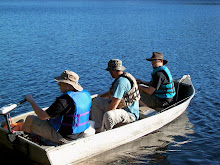
Well, I actually finished this series of posts - this might be as rare as our little friend above :) It may be the first non game play related group of posts that I finished. There were parts of each book that mostly didn't overlap with the others. I thought I might cover these to give context about each book.
Barrataria games Companion Expansion had an expanded equipment list and a little section on overland movement rates with different animals and the effect encumbrance might have on rate. It had some good descriptions in its equipment section and also had 4 fast packs... I liked the fast packs used in Moldvay's B4 - The Lost City. The fast backpack just gets through the phase of character creation where certain players will hog the book and try to buy everything in the item list. Lately, my games have been loose enough and short enough (2-4 sessions long, no long campaigns) that it wasn't worth letting people pick out their equipment. Last time we made up characters, I told them, just pick out a backpack from B4 so I will definitely be pointing my players in this direction for more variety in Ye Old Fast Pack. Barrataria had riding dogs for halflings and gnomes this gives short folk more choices than the standard pony.
JB's B/X companion had some cool sections on Dungeon Mastering as a fine art and rules for dominion. This was also something covered by Mentzer. JB's dominion rules were fast and loose, while Frank was all about the random table. I think by combining these dominion rules together with the mass combat rules, players could take part in a "game within the game" if they so choose.
Mentzer also had a pretty neat section on extraplanar adventuring. He only touches on the ethereal and elemental planes in these books. I'm assuming he saves other planes for the Masters and Immortal rules. He also touches on the concept of vortexes and wormholes which are points where the elemental planes bump up against other planes. They create little pockets ripe for adventuring that are limited in scope rather than trying to tackle an infinitely large plane. I could see using these wormholes to spark interest in the planes from my players. It could also be a spot to place an interesting NPC or villain that the PC's will have to interact with on unsure territory. You can bend the normal game physics in these spots so it is important that the PC's are experienced and have an idea of what the norm is for your adventuring world before trying to change their expectations a pocket dimension.
Overall I was happy with the companion series books. I definitely will be slow to adopt material from these books into a B/X game and will test things out one at a time. Having come from a hard core background of 2nd edition AD&D I can tell you that when the splat books (Book of Elves, Book of Gnomes, Book of Fighters, Book of Thieves, etc...) all came out, my players wanted to integrate them all into my game immediately. Initially I let them, but over time I started pulling back on this tactic. I found that by adding tons and tons of very specific rules into the game atmosphere suddenly there was less and less room for flexible GM tinkering. Suddenly all the players were turning into Rules Lawyers... I would hear stuff like, my elven PC doesn't have to sleep because the Book of Elves says he doesn't. Then I would have to play the GM fiat card and say, "Well in MY GAME WORLD elves sleep!" This kind of back and forth just disrupts game play, so I eventually had to tell my players that all the optional rules were banned from the table. Players were limited to options from the Players Handbook unless I told them they could bring in one specific component from an optional rules book.
I feel that the options presented in these companion books should be treated the same. They can add tons of extra flavor to your game, but don't add too many flavors at the same time. I like steak, and peanut butter, lobster, and ice-cream, but if you add them all together (and you aren't an Iron Chef DM) you may just get an inedible mess...






